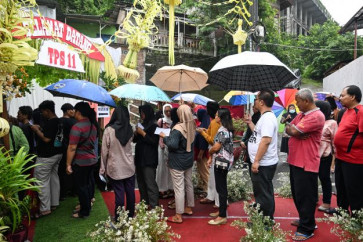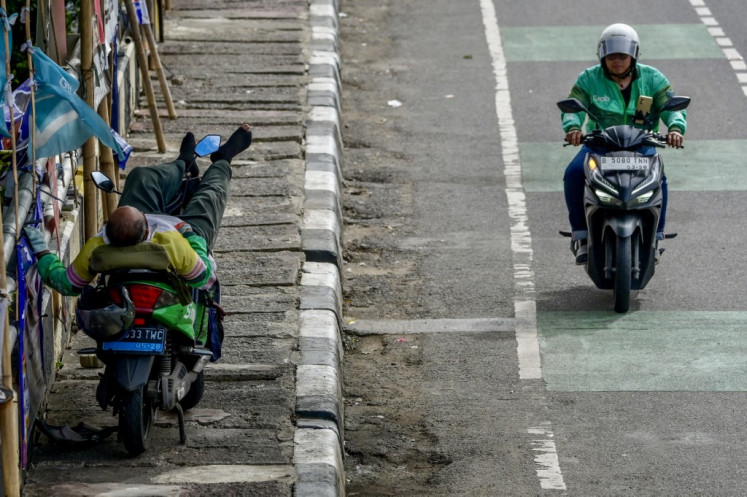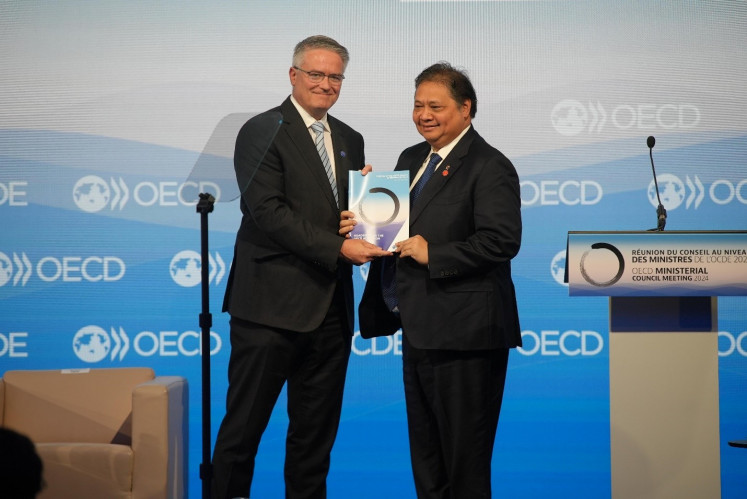Inclusive economy key to combating poverty, inequality
The government has promised to further promote economic inclusivity as part of efforts to reduce poverty and inequality in the country, especially in rural areas where the poverty rate is generally higher than in cities
Change Size

The government has promised to further promote economic inclusivity as part of efforts to reduce poverty and inequality in the country, especially in rural areas where the poverty rate is generally higher than in cities.
Speaking at an event held as part of the Annual Meetings of International Monetary Fund and World Bank Group in Kuta, Bali, on Thursday National Development Planning Minister Bambang Brodjonegoro said that developing the economy was the key to combating poverty, specifically the inequality problem.
“We need to drive economic development that provides equitable access and opportunities for all segments of society, improves welfare and reduces disparities between groups and regions,” Bambang said in a seminar titled “Inclusive Economic Growth: Reducing Poverty and Inequality”.
Bambang explained said that Indonesia’s poverty rate dropped to single digits for the first time in March this year, at 9.82 percent as compared with 10.12 percent in September, 2017. This means that as of March this year, the number of people living under the poverty line amounted to 25.95 million people.
However, despite the drop in the poverty rate, about 72 million people are vulnerable to returning back to below the poverty line, he said. “Although the rate of poverty has declined, the number of the vulnerable group is significant. They are prone to returning back to poverty as a result of becoming sick, losing a job, food price inflation, natural disasters or an economic crisis,” Bambang said.
Bambang said that natural disasters such as the recent earthquakes in Palu in Central Sulawesi and in Lombok, West Nusa Tenggara had contributed to an increase in the poverty rate, especially during the post-disaster reconstruction period.
“This means that we need to have a kind of contingency plan. We need to have a plan to deal with natural-disaster related poverty,” he emphasized.
Besides poverty, inequality is another important issue. Bambang acknowledged Indonesia’s Gini ratio had slowly decreased. Indonesia’s Gini ratio fell slightly to 0.389 in March 2018 from 0.391 in September, 2017. The Gini ratio in urban areas was higher at 0.401, while in rural areas, the Gini ratio was much lower, at only 0.324.
The Gini ratio is a measure of inequality in which 0 represents complete equality and 1 represents complete inequality.
Bambang said that poverty in villages was still a big problem although the Gini ratio in rural areas was lower than in cities. “We have low inequality in rural areas, simply because everybody is poor in rural areas. And this is not good for us,” Bambang said. Therefore, the government’s focus in dealing with poverty and inequality has to be in rural areas.
He said there were several factors that affected inequality in Indonesia, namely inequality in access to basic services, education, health, housing, clean water, sanitation and electricity. “If you don’t have access to one of them, it is easy for you to be poor,” Bambang said.
“Some people have more skills than others, and of course, one group will have the luxury of choosing the job they want, while another group will have difficulties finding even one job for their life,” he said.
The National Development Planning Agency (Bappenas), Bambang said, had already established a so-called inclusive economic development indicator, with three pillars, namely economic growth, income inequality and poverty reduction, as well as improving access and opportunities.
“These are the three pillars of how we deal with inclusiveness and poverty reduction.
The measurement of inclusiveness shows that during the period between 2011 and 2017, Indonesia’s development was more inclusive. The inclusive economic development index at the national level increased from 4.83 in 2011 to 5.47 in 2017. So, it has been a quite good improvement,” the Bappenas head said.









